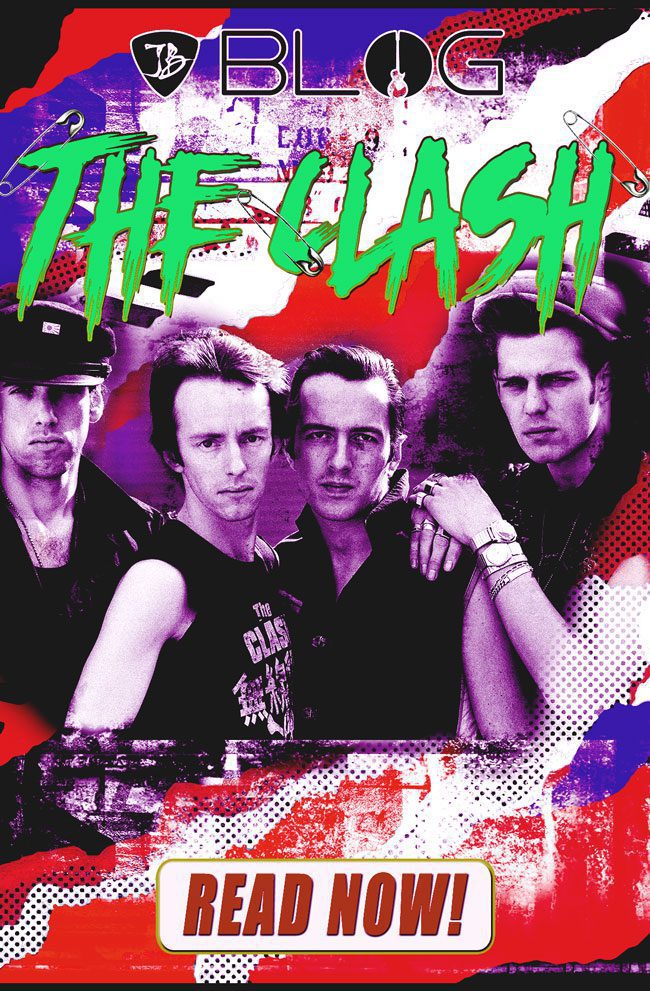The Clash – British Punk Rock!
Forming in 1976, The Clash were a vital factor in the British Punk scene. While there are many great British punk bands to talk about, The Clash became one of the most iconic of their era. As well as the sex pistols. I think what also makes them stand is that they were rebellious and unflinching when it came to their music. Furthermore, they teetered on the edge when it came to jumping around different genres of music.
Whether it’s rock, reggae, dub, funk, jazz, rockabilly and hip hop included in their music, they had fans from all over the world embracing it and sometimes taking to the next level especially with DJ’s using their beats. Below the band is playing in Munchen 1977 – Clip is an excerpt from the 1977 documentary by Wolfgang Büld “Punk in London.” schwabinger bräu.
When it came to their lyrics, they wrote about things that were personal to them and their surroundings. And mostly what was happening at the time. Their music as well as their explosive performances at times terrified people and of course there would be protests.
Some of the clubs would even ban them from performing while others embraced them. Obviously it didn’t stop the band from touring or playing in clubs, but they did leave quite an impression along the rocky road to stardom.
Starting out these were just a group of guys that came from working class families who wanted something more in the world, so they fought hard to get it. Quite honestly, the music was their way out to see the world and beyond as well as their source of solace at the same time.
The Clash Line-up
The Clash consisted of Joe Strummer who was the lead vocalist and rhythm guitarist., Lead guitarist and vocalist Mick Jones, bassist Paul Simonon, and drummer Nicky “Topper” Headon.
Furthermore, Headon left the group in 1982 and internal friction led to Jones’s departure the following year. The group continued with new members, but finally disbanded in early 1986.
While there were changes in the band, these four were the core members of the band starting out. There were others that came and went as well as coming back again.
What really made this band was Joe Strummer and Mick Jones with their unique way of writing as well as their unique perspectives on how they viewed the world. They were the rebels that would save the day and make the world right again. They both wrote songs that connected with a lot of people. This mixed with the musicality and angst in their music created quite a fan following from the start. Especially in the U.K. with their single White Riot was the track that got the ball rolling.
It wasn’t until 1979 that they toured America and had R&B acts like Bo Diddley, Sam & Dave, Lee Dorsey, and Screamin’ Jay Hawkins support them, as well as Joe Ely and the punk rockabilly band the Cramps. The choice of supporting acts indicated that the Clash were becoming fascinated with older rock & roll and all of its legends. That fascination became the driving force behind their breakthrough double album, “London Calling.”
London Calling vs Sandinista
Rolling Stone voted it the greatest album of the 80s in 1989. Don’t get me wrong, I liked the album but in my opinion, with all the album they released, there are great musical nuggets on all their releases. It really depends on what version of the band you were into. While some thought it was a sell out for the band, in all reality, it was a mature to say what they needed to say while still having the that underlying rebellion in the songs. Which appealed to most while still getting their point across.
Produced by Guy Stevens (who played a pivotal part of the 60s blues explosion), who had recorded early demos with the band. During these sessions, the sky was the limit and basically a free jam amongst the band. Needless to say with it you got a mixtape of musical genres as well as keeping the political views on point as well. Either way, it’s a masterpiece of purpose and considered one of the greatest Rock albums ever recorded.
Another one that reflected the times in a different way was “Sandinista.” aka The layers album. In Sandinista you will find multiple layers of sound, with multiple takes. Musically it went in all directions rap, rhythm and blues, reggae, ballad, rock, rockabilly, jazz, reggae, and dub. Maybe also highlighting the early beginnings of the world music genre?
Not sure but it did expand to all parts of the world. Topper Headon with his Jazz background and Paul Simonon with his bass lines. They were the stars musically on this album. In all reality it was groundbreaking.
The Good Bad and Ugly
Although the Clash were at the height of their commercial powers in 1983, the band is beginning fall apart. Chimes is fired in the spring and is replaced by Pete Howard, formerly of Cold Fish. During the summer, the band headlined the U.S. Festival in California; it would be their last major appearance.
In September, Joe Strummer and Paul Simonon fired Mick Jones because he “drifted apart from the original idea of the Clash.” Jones formed Big Audio Dynamite the following year, while the Clash hired guitarists Vince White and Nick Sheppard to fill his vacancy.
Throughout 1984, the band tours America and Europe, testing the new lineup. The revamped Clash finally releases their first album, Cut the Crap, in November. The album is greeted with overwhelmingly poor reviews and sales. Strummer and Simonon decided to permanently disband the Clash. On a positive note, although the band broke up, they all worked on their own musical projects while leaving great music for future generations to discover and embrace.
BE SURE, TO CHECK OUT OTHER JB BLOG POSTS: HTTPS://JBONAMASSA.COM/CATEGORY/BLOG


